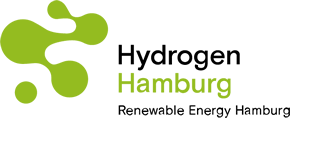Details
Hydrogen: at the heart of the cooperation between Japan and Hamburg From Hamburg to the world: EEHH delegation trip to Japan (Part 2)
The Hamburg delegation spent the last day in Osaka visiting the World Expo. They then continued to Tokyo und Fukushima. The agenda in Tokyo included a networking evening with club members and partners. In Fukushima, the EEHH Cluster Agency met with local knowledge institutions to analyse the potential for research cooperation.

EXPO 2025 Osaka – Global community for a sustainable future
The World Expo in Hamburg's twin city Osaka was the principal motivation for the delegation's trip. With “Designing Future Society for Our Lives” as its motto, EXPO 2025 aims to bring the international community together in order to shape a sustainable future. Germany is represented with eye-catching architecture, accompanied by topics and potential solutions for the circular economy.
The German Pavillion is a prime example of sustainable construction. There are seven circular cylindrical buildings beneath the green roof that represent the guiding vision of the circular economy. Particularly innovative building materials such as mushroom mycelia and hempcrete were used to construct the pavilion. Its whole concept embodies sustainability. Although the entire pavilion will be dismantled after the expo, all components – including supporting columns, floors and furniture – are reusable.
“Wa! Germany” is the title. In Japanese, the word “wa” is quite ambiguous. It means “circle” and “harmony” but also “wow” – an expression of surprise and fascination. With its interactive and playful elements – especially the cute mascot "Circulars" as a welcoming companion – visitors are given an extraordinary experience of how Germany is shaping its path to a sustainable society. Hamburg is providing genuine inspiration for the green transformation and innovative, sustainable urban development by presenting forward-looking pilot projects such as the Hamburg Green Hydrogen Hub and Science City Bahrenfeld.
EXPO 2025 Osaka will run from 13 April to 13 October on Yumeshima, an artificial island in the Osaka port area. The size of the EXPO complex is equivalent to around 217 football pitches.

Strengthening the Hamburg network in Tokyo
EEHH members RWE, Siemens Gamesa and DNV are among the key players driving the energy transition in Japan. Whether it’s offshore wind or hydrogen, they are investing capital and harnessing technical expertise to help Japan reach its climate protection goals. Aside from private sector players, the EEHH Cluster Agency maintains close contacts with public and institutional stakeholders such as the German Embassy, the Japanese-German Energy Partnership, the World Forum Offshore Wind (WFO) and the Hamburg Ambassadors. Together they represent a wide network with a strong affinity to Hamburg, which the EEHH Cluster Agency can exploit in its cooperation with Japan.
These and other partners were delighted to accept the EEHH Cluster Agency’s invitation to the EEHH Renewables Night, a networking event in Tokyo. Enjoying the relaxed atmosphere over a Japanese hotpot, guests engaged in lively discussions of topics ranging from current policies to ongoing projects.

Expanding the research cooperation with Fukushima
Hamburg and Fukushima are committed to the goal of climate neutrality (2040–2045). The two regions are pioneers in expanding the use of renewable energies in both countries. A strong shared interest is gradually taking shape, especially in regard to hydrogen. Hamburg is heavily involved in ramping up the hydrogen economy with its pilot projects such as HH-WIN and the Hamburg Green Hydrogen Hub. The use of hydrogen in the mobility sector is already commonplace in Fukushima. Its prefectural government has adopted a clear strategy: Not only has hydrogen been earmarked to revitalise the regional economy, it will accelerate Fukushima's transformation into a green society.
Around the world, green hydrogen is becoming a key technology for industrial decarbonisation and a climate-neutral future. Both countries are engaged in vigorous research to establish it as a versatile energy carrier. Hamburg boasts a unique research landscape that is shaped by interaction between universities and extramural research institutions. Research is a top priority in Fukushima as well. The national research institute for renewable energies (FREA) is based in the city. Research into the wider topic of hydrogen has also taken centre stage with the establishment of a hydrogen department.
The significant overlap between the topics and work in hydrogen research soon came to the fore during discussions with FREA and Fukushima University. Prof. Dr. Hans Schäfers, Director of the Competence Centre for Renewable Energy and Energy Efficiency (CC4E) at the Hamburg University of Applied Sciences, was thrilled by the Japanese partners’ research: “I found it exciting to see, as the organisation and topical priorities at FRA are similar to our own at CC4E.” In-depth dialogue was agreed on the basis of this common interest, focussing on research in the areas of hydrogen obtained from biomass and negative emissions.
The delegation rounded off its trip with a visit to Namie – the place that combines commemoration of the devastating nuclear disaster in 2011 with the courage and determination to create a hydrogen-based society. What impressed the delegation in particular was the progress made in transforming the vision into reality. The green hydrogen produced nearby at FREA is transported to households via special hydrogen overhead lines or in small cylinders to supply electricity and heat. The expansion of hydrogen refuelling stations for fuel cell cars is another key element in the initiative to help Namie Town become a carbon-neutral city.
A new centre focusing on hydrogen is scheduled for construction in Namie over the next few years. What will matter most is the effective use of hydrogen, whether in commercial, residential or public infrastructure. Together with two other projects, Namie received funding from the Japan Innovation Fund for its pioneering ideas.
Conclusion
While Germany believes that industrial decarbonisation offers the greatest potential for hydrogen, Japan is developing a holistic roadmap for its use in business, industry and society. For example, the supply of electricity and heat obtained from hydrogen has already become commonplace in Japanese households. Germany is embracing power-to-heat technology (heat pumps) and sector coupling. Fuel cell cars are well-established in Japan. Germany, on the other hand, is focussing on the battery-electric variant. But when it comes to trucks, both countries agree that hydrogen is the better solution thanks to the decarbonisation of heavy goods transport it provides, along with greater range and shorter refuelling times.
Another area that divides the two countries – instead of uniting them – is their openness to technology. The focus in Europe and Germany is on green hydrogen. The aim is to produce hydrogen either from surplus green electricity or from integrated energy generation in the wind energy or solar power segments. Compliance with climate protection targets must also range among the top priorities when importing hydrogen from other countries.
The Japanese government is determined to achieve rapid and widespread use of hydrogen. In view of the limited capacity of renewable electricity, fossil energy carriers such as coal and gas – as well as nuclear power – will remain as key sources of electricity in the medium term, mainly in the production of grey or blue hydrogen.
The Fukushima disaster profoundly shaped the energy transition in Japan. By 2040, the share of renewable energies in the electricity mix is expected to rise to 40-50%. But this is associated with a number of challenges: mountainous landscapes, bottlenecks in the transmission grid and natural risks such as typhoons and earthquakes make the expansion of onshore wind energy particularly difficult. This is compounded by the fact that offshore wind energy is still in its infancy. The geological conditions and deep waters require the use of floating foundations, an expensive technology that has not yet reached full maturity.
Cooperation with Australia is a mainstay of the hydrogen supply and the hydrogen supply chain for Japan. Australia produces blue hydrogen from coal-fired power generation built on CCS technology and transports it to Japan by ship. The transport sector offers the greatest potential for the use of hydrogen, although it is also expected to contribute to a reduction in carbon emissions in the Japanese electricity sector. Several electricity suppliers such as Tohoku Electric Power and Japan Electric Raising Agency are testing and trialling the co-firing of ammonia or hydrogen in their coal-fired power plants. But this technology is viewed as controversial in regard to its economic viability, environmental impact and technical challenges.
One week, three cities: an intensive delegation trip, but also a journey brimming with wonderful encounters and inspirational insights. Germany and Japan have a lot in common on the road to climate neutrality: technology, innovation and diversification of the energy supply. With its special economic strength and truly cosmopolitan mindset, Hamburg is a competent anchor partner for advancing cooperation in the energy industry and deepening shared understandings of the energy transition. The EEHH Cluster Agency is looking forward to expanding its long-standing relationship with Japan into a permanent energy partnership.


